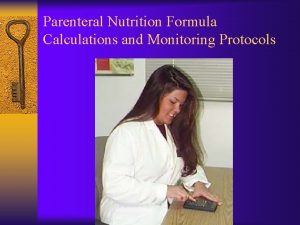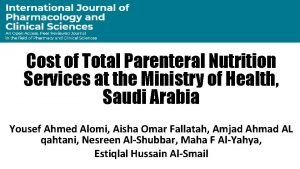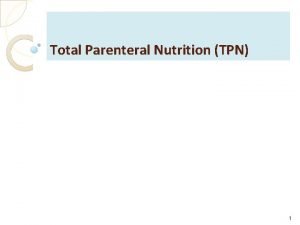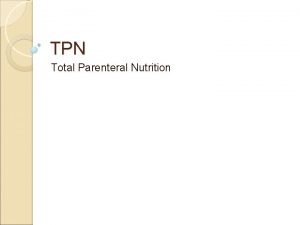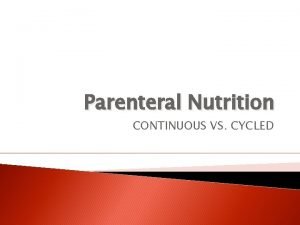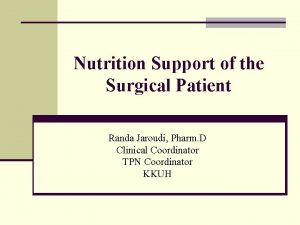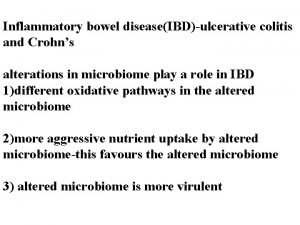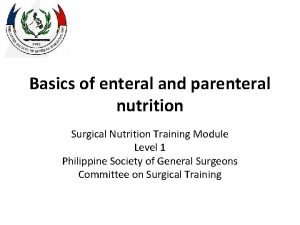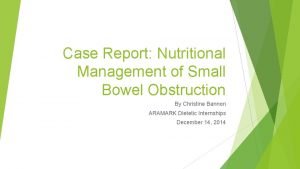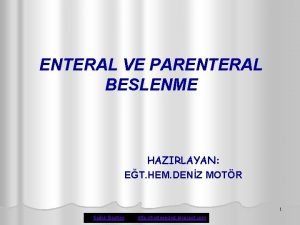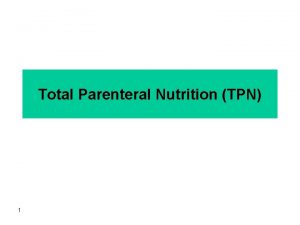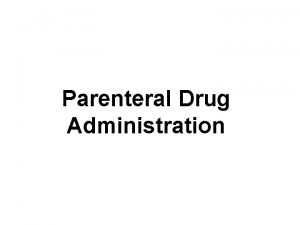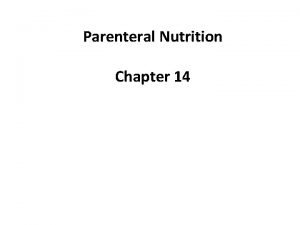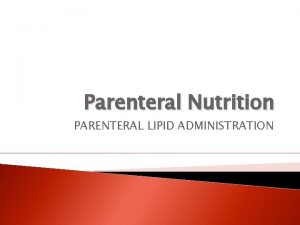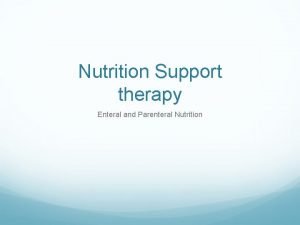TPN Total Parenteral Nutrition In patient pharmacy services










- Slides: 10

TPN Total Parenteral Nutrition

In patient pharmacy services �Drug distribution services �I. V admixtures and TPN �Drug therapy monitoring

TPN means full provision of total calories, proteins, lipids, carbohydrate, electrolytes and micronutrients for maintenance of good health and nutrition, � TPN is considered as an alternative route for patient feeding specially if: 1. Oral route is not available or advisable (unconscious or comatose patients) 2. Severe short bowel syndrome 3. Severe pancreatitis 4. Severe vomiting and diarrhea 5. Postoperative complications (prolonged ileus) 6. Gastrointestinal obstruction 7. Severe malabsorption 8. Major burns 9. Long bone fractures 10. Geriatric patient �

TPN �Nutrition Support Team (NST) �Physicians, nurses, pharmacists and dietitians �Pharmacist tasks include: 1. Solution compounding 2. Evaluation of drug-drug and drugnutrient interactions 3. Formula design 4. Compatibilities 5. Metabolic monitoring

Nutritional requirements A- carbohydrates �One of the energy sources e. g. I. V dextrose (d-glucose) at concentrations of 5 or 10 %) is well tolerated by the peripheral vein. Concn. up to 70 % can be used but hypertonic. �Dextrose is compatible with amino acid solutions, electrolytes and fat emulsions �Other sources (fructose, maltose, glycerol and sorbitol)

Nutritional requirements Fats B� Essential fatty acids (EFA): are needed because Carbohydrate based TPN causes increased lipogenesis and decreased lipolysis. � EFA (linoleic, linolenic and arachidonic) are important for (cellular integrity, pulmonary surfactant, immune competence. . etc) � To prevent EFA deficiency 4% of total calories (100 g of I. V fat) must be provided per week � Advantages over carbohydrates: 1. Low osmolarity 2. No effect on insulin 3. Decreased CO 2 production during oxidation

Nutritional requirements C- Proteins � Important for maintaining lean body mass � Commercial protein sources are crystalline amino acids � Hospitalized adult patient requires 1. 0 -1. 5 g/kg/day increased to 2. 0 -2. 5 g/kg/day with stress D- Micronutrients � Electrolytes, vitamins and trace elements, are required for normal body function. � These include, sodium, potassium chloride, acetate, phosphorus, calcium, magnesium, zinc, chromium, copper, selenium, manganese, iron and vitamins.

Delivery of parenteral nutrition � 1. � � � 2. � A. B. C. D. Via peripheral or central route Peripheral venous access I. V support for less than 2 weeks hypertonic solutions must be avoided (osmolarity not more than 600 -900 m. Osm) Lipid emulsions are recommended (isotonic) Amino acids conc. Not more than 5 % with dextrose 12 % Volumes 2 -4 litre daily Addition of 1000 U heparin and 5 mg hydrocortisone per litre may prevent phlebitis (inflammation of the vein) Central venous access by cannulation in the superior vena cava; Advantages: patient comfort Avoidance of phlebitis Long term access Osmolarity not restricted

Delivery of parenteral nutrition TPN solutions (dextrose and amino acids with I. V fats provided piggyback) � TNA (total nutrition admixture): also known as 3 -in-1 (dextrose, amino acid and fats in a single large volume container) � All must be prepared in a laminar flow hood under aseptic conditions � QA procedures are needed to ensure a sterile final product � TPN solutions (dextrose-amino acids) with electrolytes are stable for 30 days � When preparing TNA: the amino acid must be added to the fat emulsion prior to the addition of dextrose because the proteins act as a buffer between alkaline I. V fat and acidic dextrose � TNA or 3 -in-1 solutions should not be stored more than 8 days � Vitamins degrade over 24 -48 hrs, so preferably added just before administration � 0. 22 µ filter may be used for bacteria, particulate matter or air bubble removal � I. V fat emulsions have large particle sizes, so 1. 2 µ filter may be used for lipids or 3 -in-1 formulas �

Daily requirements of I. V electrolytes and trace elements
